Discover the Benefits of Yoga on International Yoga Day

In a fast-paced world, we often find ourselves overwhelmed by personal and professional responsibilities, leading to stress and a loss of tranquillity. As a result, our hectic daily lives contribute to various health issues and a general sense of discomfort. However, there is a timeless practice that can help us address these challenges and improve our overall well-being—Yoga.
India has gifted the world with the remarkable legacy of Yoga, which holds immense potential for rejuvenating and revitalizing our bodies. As millions of people worldwide have experienced the transformative power of Yoga, it is essential that we celebrate Yoga Day by rediscovering its boundless benefits.
Here’s why you should include Yoga in your daily routine:
1. Embracing holistic well-being
Yoga recognizes the unbreakable unity between our mind and body. In our pursuit of material prosperity, we often neglect our mental health. Yoga allows us to step away from this toxic cycle by working simultaneously on our mind and body. Through various forms of breathing exercises and yogic practices, we can centre our minds, cultivate calmness, and channel our energies for holistic well-being.
2. Anchoring oneself to the present
Our minds are often consumed by worries about the future and regrets from the past. This mental agitation hampers our productivity and quality of life. Yoga’s body and breathing exercises help us break free from the symbolic maze of our thoughts, allowing us to embrace the present moment. By shedding our preoccupations and anxieties, we become capable of experiencing joy and fostering meaningful relationships.
3. Cultivating joy and fostering relationships
In a world driven by self-defence and competition, Yoga helps us disarm ourselves and learn to honour and respect the kindness and vulnerabilities in others. By reducing anxiety and quieting the mind, Yoga teaches us that true friendship and amity are possible when we lower our defences and open our hearts and minds to others.
4. Improve overall immunity
Yoga aligns the mind and body, fostering a sense of ownership and responsibility towards our physical well-being. It encourages us to treat our bodies well and nourish them with healthy practices. Regular Yoga practice boosts metabolism, aids in weight reduction sustainably, and strengthens our immune system from within.
This Yoga Day, whether you’re new to Yoga or an experienced practitioner, embrace its transformative power. Revisit, share, or commit yourself to this practice, and witness the positive impact it brings to your mind and body.
Yoga Asanas (Poses) to Try:
Anjaneyasana (Low Lunge):
This pose helps stretch and strengthen the legs, hips, and core.
To practice Anjaneyasana:
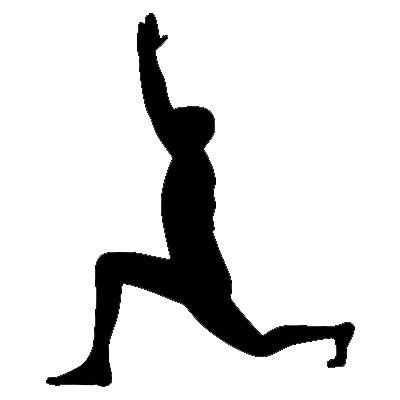
- Start in a standing position with your feet hip-width apart.
- Step your right foot forward, creating a comfortable distance between your feet.
- Bend your right knee, ensuring it is directly above your ankle.
- Lower your left knee gently to the mat, aligning it with your left hip.
- Inhale as you lift your torso upright, engaging your core muscles.
- Exhale and sink your hips forward, feeling a stretch in the front of your left thigh and hip.
- Raise your arms overhead, reaching up towards the sky.
- Hold this pose for 30 seconds to 1 minute, focusing on deep and steady breathing.
- To release, lower your arms, lift your back knee off the mat, and step your right foot back to meet the left.
- Repeat the same steps on the other side, stepping your left foot forward and bending the left knee.
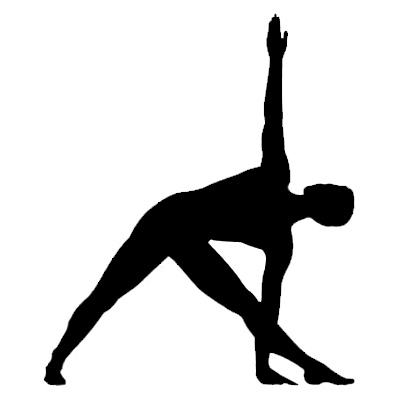
Trikonasana (Triangle Pose):
This pose helps stretch and strengthen the legs, hips, and core. It also improves balance, posture and enhances overall flexibility.
To practice Trikonasana:
- Stand with your feet wider than hip-width apart, right foot turned out and left foot slightly turned inward.
- Extend your arms out parallel to the floor.
- Exhale and reach your torso to the right, keeping your hips facing forward.
- Lower your right hand to the floor, a block, or your shin, while extending your left arm up.
- Gaze upward or forward, depending on your comfort.
- Hold for a few breaths, feeling the stretch along the side of your body.
- Inhale and return to an upright position.
- Repeat on the other side, turning the left foot out and reaching to the left. Remember to adjust the pose according to your comfort level and use props if needed.
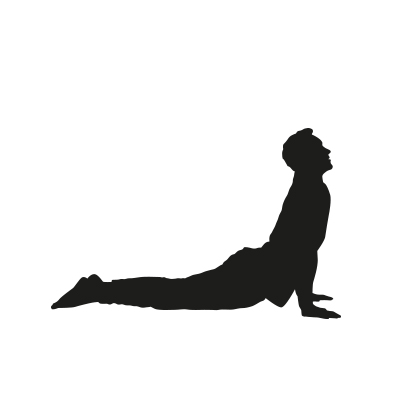
Bhujangasana (Cobra Pose):
This pose helps strengthen the back muscles and lungs. It also increases blood circulation.
To practice Bhujangasana:
- Lie down on your stomach.
- Place your palms next to your chest, with your elbows pointing outwards.
- Ensure that your stomach is touching the floor.
- Engage your core muscles and prepare to lift your body.
- Press your palms firmly into the ground and begin to lift your upper body off the floor.
- Use the strength of your arms, shoulders, and core to raise your torso while keeping your legs relaxed.
- Keep your gaze forward, avoiding any strain on your neck.
- Hold the position for a few breaths, maintaining stability and engaging your muscles.
- To release, slowly lower your body back down to the starting position, with control and awareness.
- Rest for a moment and repeat the exercise for additional repetitions if desired.
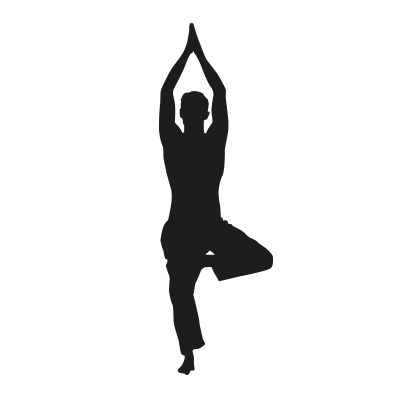
Vrikshasana (Tree Pose):
This pose helps improve body balance, pelvic stability, and strengthens the bones of the hips and legs.
To practice Vrikshasana:
- Begin by standing on one foot.
- Take your other foot and place it on the inner thigh of your standing leg.
- Ensure that your foot is positioned firmly on your inner thigh. Avoid placing it on the knee joint.
- Press your palms together in a prayer position in front of your chest.
- Engage your core muscles for balance and stability.
- Inhale deeply, and as you exhale, extend your arms straight up overhead.
- Keep your gaze forward or slightly upward, maintaining a steady focus.
- Lengthen your spine and reach through your fingertips, feeling a gentle stretch in your body.
- Hold this position for a few breaths, maintaining balance and grounding through your standing foot.
- To release, lower your arms and gently bring your foot down from your inner thigh.
- Repeat the same steps on the other side, standing on the opposite foot and placing the other foot on the inner thigh.
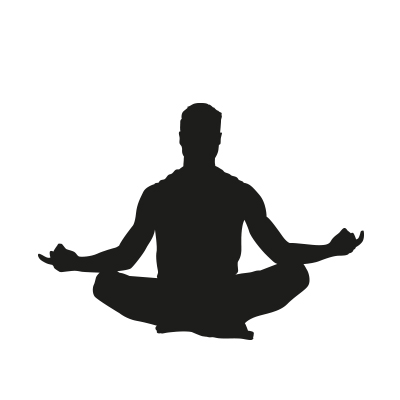
Padmasana (Lotus Pose):
This is the classic meditation pose in Yoga. If you find it difficult to maintain the full Padmasana pose, you can start with a half Padmasana.
To practice Padmasana:
- Start by sitting on the floor in a comfortable position.
- Fold your left foot over your right thigh, bringing the left ankle closer to your right hip.
- Alternatively, you can fold your right foot over your left thigh, bringing the right ankle closer to your left hip.
- Ensure that your spine remains erect, maintaining a tall and straight posture.
- You can use your hands to gently assist in positioning your foot over the thigh if needed.
- Find a position where you feel a comfortable stretch in your hips and thighs.
- Relax your shoulders and keep your chest open.
- Take deep breaths and focus on maintaining a relaxed yet attentive state.
- Hold this position for a few breaths.
- To release, gently unfold your foot and repeat the steps on the opposite side, folding the other foot over the thigh.
These Yoga poses offer a glimpse into the diverse range of practices available. Exploring and incorporating different poses and styles into your routine can provide a well-rounded and fulfilling Yoga practice.
On this Yoga Day, embrace the boundless gifts of Yoga and discover its infinite benefits. Whether you’re a beginner or an experienced practitioner, integrating Yoga into your daily routine can lead to holistic well-being, anchoring yourself in the present, cultivating joy and fostering relationships, and improving overall immunity. Let Yoga be your companion on the journey to a healthier, happier, and more balanced life.
Please note that while the information provided here is intended to be helpful, it is essential to listen to your body, adapt poses as necessary, and consult a qualified Yoga instructor for personalized guidance or if you have any specific health concerns.

 Blog
Blog Blog
Blog
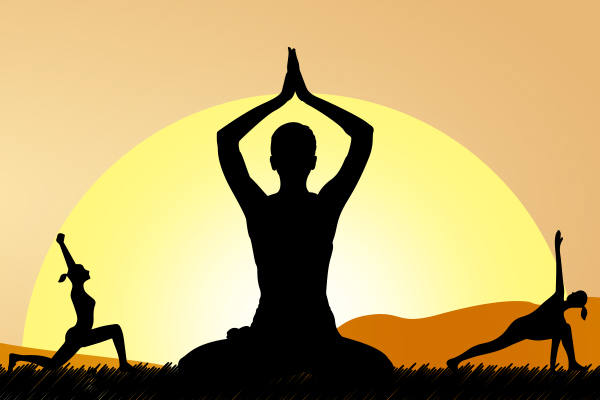


Comments
No comments yet.